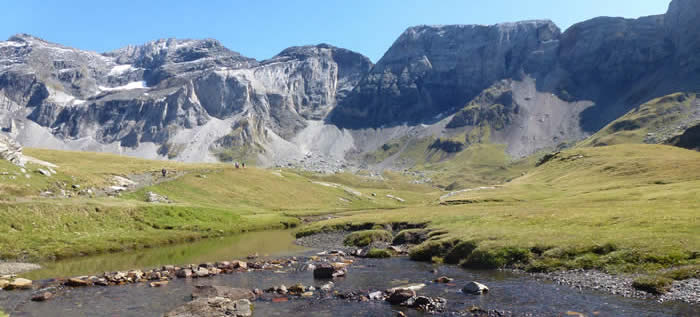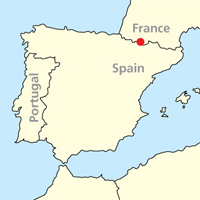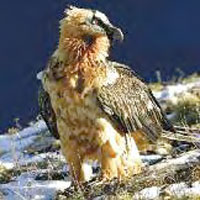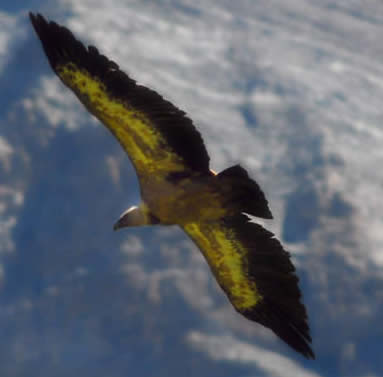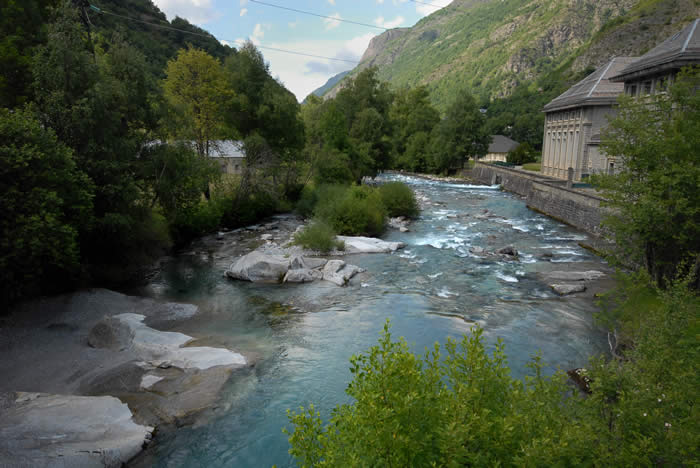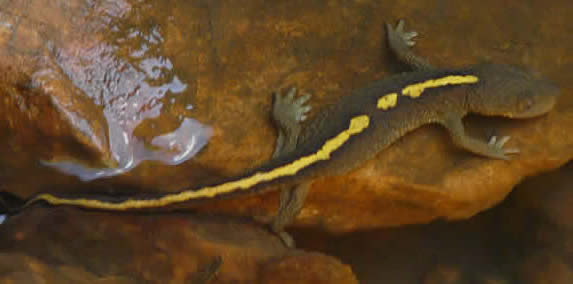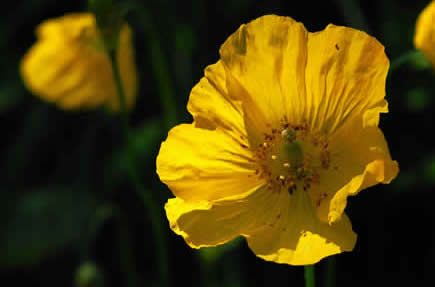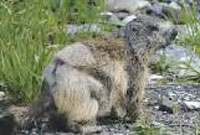French Pyrenees 6 – 13 September 2017 *
Stunning scenery and mountain wildlife
For a combination of mountain views, flowers, butterflies and birds, the Pyrenees take some beating. Spectacular cirques, flower-filled meadows and soaring vultures; it lends itself to our mixed natural history style.
Many Honeyguiders know the Spanish Pyrenees: the French side is lusher, greener and the emphasis of this holiday is much more on the high Pyrenees. Access is easy to gentle walks or pottering in mountain pastures, up there with the isard – Pyrenean chamois – and marmots.
That most thrilling of birds, the bearded vulture, is as easy to see here as anywhere; other birds of prey include griffon vultures, golden eagles and red kites. There are wallcreepers, though typically they are elusive. Red-billed and alpine choughs feed in the high meadows.
September also brings a flow of migrants. Countless numbers of birds are moving south and many rest and feed in Pyrenean valleys before crossing the high peaks. Weather conditions and luck will play their part in what we see: warblers, flycatchers and hirundines are the likeliest.
Gavarnie River and Cirque
Butterflies include Camberwell beauty, Queen-of-Spain fritillary and swallowtail, plus a selction of graylings, ringlets, blue, fritillaries and others.
We’ll search screes and short turf for alpine toadflax and gentians. Damp patches have grass-of-Parnassus and yellow mountain saxifrage.
It’s a good time of year to look for two specialised ‘herptiles’ of the area. Watercourses can hold Pyrenean brook newts and Pyrenean rock lizards scuttle around on rocks in the higher pastures.


Alpine chough and
Pyrenean brook newt (Ivan Nethercoat); Apollo butterfly.
Birds
Highlights, in addition to those mentioned above, could include short-toed eagle, peregrine, black woodpecker, crag martin, water pipit, black-bellied dipper, crested tit and crossbill.

Isards - Pyrenean chamois (Ivan Nethercoat)
Holiday details
Our base is the Hotel La Brèche de Roland, in Gèdre, just north of Gavarnie. It’s an attractive former 17th century family house in the village, looking out onto Brèche de Roland. The ‘brèche’ or breach is like a bite out of the top of the cirque, measuring 100m by 60m. Roland, nephew of Charlemagne, carved it, according to 11th century legend. He was leading the fight against the Moors and was trying to smash his magical sword Durandel to save it from enemy hands.
The cirque of Gavarnie is rightly famous; it can be busy but that takes little away from its magnificence and wildlife interest. Other sites to be visited include the Barrage des Gloriettes, Saugué valley, Ossoue valley, Col de Tentes, Col du Tourmalet and Cirque de Troumouse.
Price: £1,450 per person in twin room for a full week (Wednesday to Wednesday).
Single room supplement: £160
En suite facilities
Flights: Scheduled Ryanair flight, Stansted to Lourdes
Deposit: £300
Maximum number (two leaders): 14
Troumouse cirque
Leaders
Chris Durdin is the driving force behind Honeyguide, running holidays since 1991. For many years he combined this with his work for the RSPB in Eastern England, often the Society’s spokesman, but has been concentrating on Honeyguide full-time since 2009, alongside writing a book about Norfolk’s cranes. He’s also a qualified soccer coach, for one son’s under 14 year group. As a naturalist, Chris is an all rounder. A co-leader depends on group size and diaries.
Ivan Nethercoat currently works at the RSPB nature reserve at Bempton Cliffs in East Yorkshire. His job is to get people interested in visiting the site when the puffins aren’t there. He has worked for RSPB for 34 years in a variety of roles from Birdbus driver to Learning & Development manager.
He is a regular and well-travelled Honeyguide leader, starting in 1992 with holidays in the Balearics, Crete and French Pyrenees. His degree, many moons ago, was in photography, and he is very happy to help any photographers in the group.






Click on the thumbnails above for a selection of French Pyrenees photos by Ivan, from June 2011.
Conservation project
The lammergeier, or bearded vulture, is Europe’s scarcest bird of prey. Though never common, their decline prompted a partnership to tackle their protection and, as a result, numbers are now on the up. La Ligue pour la Protection des Oiseaux (LPO, the French Bird Protection League) is active here, with careful monitoring of the local population of the casseur d’os (bonebreaker), including tracking birds with radio transmitters; site protection in collaboration with other mountain users, such as climbers; and food provision in the breeding season.
More on the LPO's bearded vulture project (in French) here.
Lammergeiers — increasing in the French Pyrenees 1994 — 17 pairs Lammergeier in flight (Ivan Nethercoat) SUPPORTING |
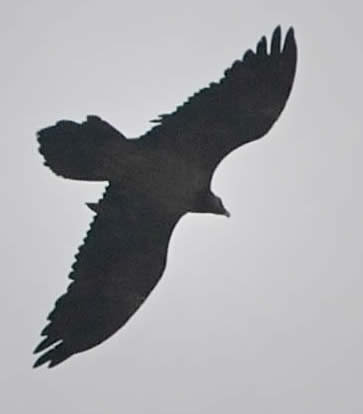 |
The range has also expanded. In 1994, they were just in the western half of the French Pyrenees. Now they are found throughout the French Pyrenees. Source: LPO.
In addition there were 126 pairs in the Spanish Pyrenees, with the highest number (83 pairs) in the region of Aragón. Add in one pair in Andorra, and that's a total of 166 pairs in the Pyrenees.
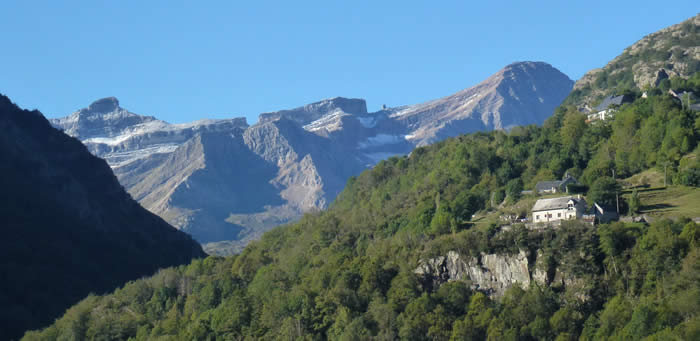
The Brèche de Roland, the gash centre-left in this part of Gavarnie's Cirque, from Gèdre-Dessus (upper Gèdre).


